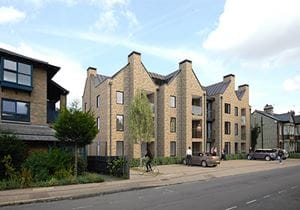Cian Bryan, Planning Futures director, reported that the survey prompted responses from over 250 English local planning authorities, which were then followed up with phone interviews. He said the drop in staff has been as a result of increasing workloads for planning teams, with a rise in application determinations between 2011 and 2016 as the economy picked up. Bryan also said that despite the overall decline, around 26% of councils had managed to increase their planning staff over the period by investing in their teams. He said “We were surprised that the drop was only 14.6%, given the level of concern about resourcing within the industry.”
The report says, authorities have had to focus on their lawful obligation, however planning teams have struggled to meet other objectives beyond determining applications, said Bryan, adding: “We are looking at a different few years for the planning service nationally”.
The report found that the biggest strain on planning department capacity is a lack of funding due to authorities not being able to charge for development management services. Bryan said that the support of elected members, particularly council leaders, was “particularly critical” for strong planning services. The report also called for authorities to have the flexibility to set their own planning application fees and for central government to work with the Planning Advisory Service to provide planning training for all council leaders. The report said that the training should emphasise “the link between planning and the delivery of broader local government objectives, such as social and economic regeneration”.
The event was being chaired by former shadow planning minister Roberta Blackman-Wood, who revealed she would be chairing a Labour Party commission on planning. The commission would be launched next January, she said, and would look at planning department resources and the issue of committee decisions being overturned at appeal, among other issues.
Click here to find out about the Planning Consultancy services available at Carter Jonas.
For further information, please contact a member of our team:
Nick Taylor
Partner, Planning & Development
0207 016 0733
Nick.taylor@carterjonas.co.uk




 Carter Jonas recently obtained a resolution of approval for a scheme designed to meet Clare College, Cambridge accommodation needs by providing 85 rooms to provide flexible accommodation for postgraduate students and fellows of Clare College with a range of student accommodation types. Clare college is the second oldest college in Cambridge University and the scheme will provide an opportunity to "repair" the Chesterton Road and Hamilton Road frontages to the site in keeping with the adjoining De Freville Conservation area; and create new high quality landscape and external spaces.
Carter Jonas recently obtained a resolution of approval for a scheme designed to meet Clare College, Cambridge accommodation needs by providing 85 rooms to provide flexible accommodation for postgraduate students and fellows of Clare College with a range of student accommodation types. Clare college is the second oldest college in Cambridge University and the scheme will provide an opportunity to "repair" the Chesterton Road and Hamilton Road frontages to the site in keeping with the adjoining De Freville Conservation area; and create new high quality landscape and external spaces.  Carter Jonas was instructed to prepare a planning application for the conversion of an existing agricultural building to a single dwelling in the open countryside. Pre-application advice was sought from West Berkshire Council who provided detailed comments on a range of material considerations. We provided advice and guidance on the acceptability of the proposals and great care was exercised in the design of the conversion to ensure no harm will result to the character or appearance of the buildings or the wider area. This helped to ensure successful planning permission was achieved.
Carter Jonas was instructed to prepare a planning application for the conversion of an existing agricultural building to a single dwelling in the open countryside. Pre-application advice was sought from West Berkshire Council who provided detailed comments on a range of material considerations. We provided advice and guidance on the acceptability of the proposals and great care was exercised in the design of the conversion to ensure no harm will result to the character or appearance of the buildings or the wider area. This helped to ensure successful planning permission was achieved. 





